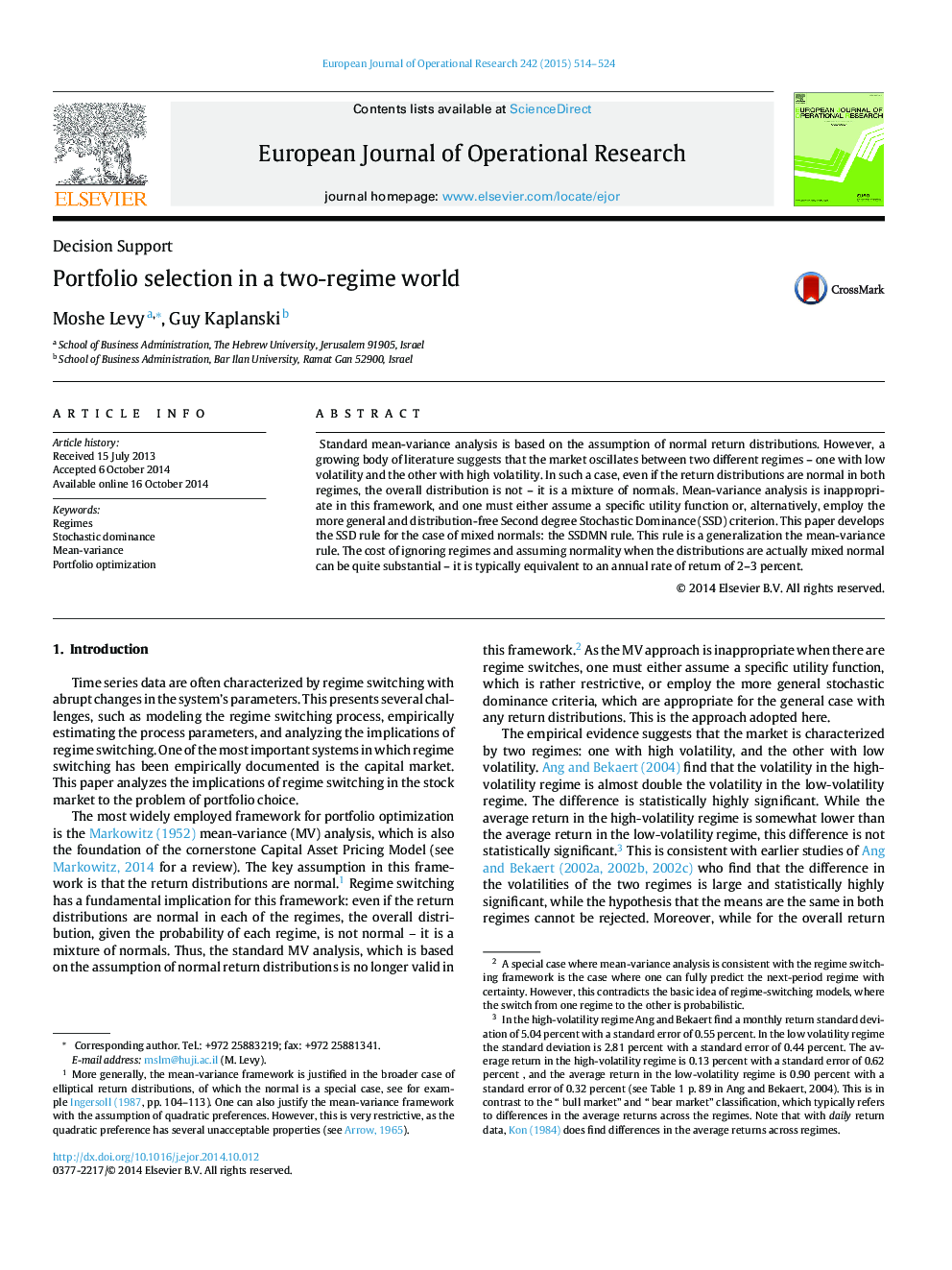| Article ID | Journal | Published Year | Pages | File Type |
|---|---|---|---|---|
| 479690 | European Journal of Operational Research | 2015 | 11 Pages |
•We develop a stochastic dominance criterion for the case of mixed-normal distributions.•This criterion is a generalization of the mean-variance rule, and a special case of the general SSD criterion.•The resulting efficient set is significantly reduced relative to the SSD efficient set.•Employing the mean-variance rule in portfolio selection without taking into account that the distribution is mixed normal leads to a loss of 2–3 percent per year.
Standard mean-variance analysis is based on the assumption of normal return distributions. However, a growing body of literature suggests that the market oscillates between two different regimes – one with low volatility and the other with high volatility. In such a case, even if the return distributions are normal in both regimes, the overall distribution is not – it is a mixture of normals. Mean-variance analysis is inappropriate in this framework, and one must either assume a specific utility function or, alternatively, employ the more general and distribution-free Second degree Stochastic Dominance (SSD) criterion. This paper develops the SSD rule for the case of mixed normals: the SSDMN rule. This rule is a generalization the mean-variance rule. The cost of ignoring regimes and assuming normality when the distributions are actually mixed normal can be quite substantial – it is typically equivalent to an annual rate of return of 2–3 percent.
